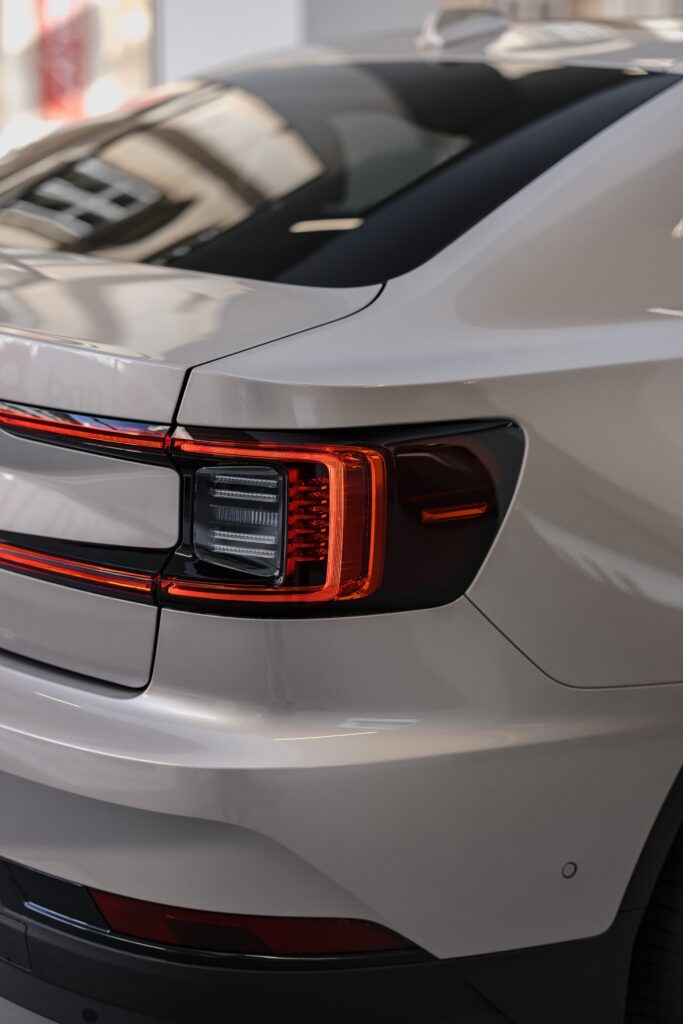In the world of high-performance automotive modifications, one term that often gets thrown around is the turbo-back exhaust. But what exactly is it? Well, in simple terms, a turbo-back exhaust is a system that replaces the entire exhaust system from the turbocharger all the way to the tailpipe. It’s a popular choice among car enthusiasts looking to enhance their vehicle’s performance and unleash the full potential of their turbocharged engine. Join us as we take a closer look at what a turbo-back exhaust is, how it works, and the benefits it can bring to your ride. So buckle up and let’s dive into the world of turbo-back exhaust systems!
Definition of a Turbo-Back Exhaust
Understanding the terminology
A turbo-back exhaust refers to an aftermarket exhaust system that replaces parts of the original exhaust setup found on a vehicle with a turbocharged engine. The term “turbo-back” indicates that this type of exhaust system starts from the turbocharger and extends all the way to the rear of the vehicle, including the various components in between. It is important to note that a turbo-back exhaust is specifically designed for vehicles equipped with turbochargers.
How turbo-back exhaust differs from other exhaust systems
turbo-back exhaust systems differ from other exhaust setups, such as axle-back or cat-back systems, in terms of scope. While axle-back exhausts only replace the components from the rear axle to the tailpipe and cat-back exhausts replace parts from the catalytic converter to the tailpipe, a turbo-back exhaust covers a more extensive range. This includes the turbocharger, downpipe, midpipe, and muffler. The turbo-back exhaust system allows for greater customization and performance enhancements, making it a popular choice among automotive enthusiasts.
Component Parts of a Turbo-Back Exhaust
The Turbocharger
The turbocharger is a central component in a turbo-back exhaust system as it influences the overall performance and efficiency. It is an air compressor driven by exhaust gas, which forces more air into the engine’s cylinders, effectively increasing the amount of oxygen available for combustion. This pressurized air mixture enables the engine to burn more fuel and produce more power. The turbocharger is typically located between the exhaust manifold and the downpipe, and it plays a crucial role in providing the extra boost that enhances the vehicle’s performance.
Downpipe
The downpipe is the section of the exhaust system that connects the turbocharger to the rest of the system. It carries the exhaust gases generated by the engine away from the turbocharger and directs them towards the catalytic converter or straight to the midpipe. Downpipes are often larger in diameter compared to the stock exhaust setup, allowing for improved flow and reduced exhaust gas backpressure. This reduction in backpressure prevents the exhaust gases from impeding the performance of the turbocharger, resulting in improved engine efficiency and power delivery.
Midpipe
The midpipe is the section of the exhaust system that connects the downpipe to the muffler or resonator. It serves as a conduit for the exhaust gases to flow from the turbocharger to the rear of the vehicle. Midpipes are typically designed with larger diameters and smoother bends to facilitate the efficient flow of exhaust gases. This optimized flow helps reduce restrictions and backpressure, allowing the engine to breathe more freely and operate at higher performance levels. The midpipe also contributes to sound modifications, which will be discussed in more detail later.
Muffler
The muffler is a component in the turbo-back exhaust system responsible for reducing the noise generated by the engine. It achieves this by employing various sound-dampening mechanisms, such as chambers, baffles, and sound-absorbing materials. While it may seem counterintuitive for automotive enthusiasts seeking a more aggressive exhaust note, a well-designed muffler can strike a balance between reducing excessive noise and providing an appealing sound. Some turbo-back exhaust systems may include resonators in addition to or instead of mufflers, depending on the desired sound characteristics.

Function and Purpose of a Turbo-Back Exhaust
Role in the combustion engine
A turbo-back exhaust system plays a vital role in optimizing the performance of a combustion engine, especially in vehicles with turbochargers. It enhances the exhaust gas flow, allowing the engine to expel burnt gases more efficiently. By improving the efficiency of exhaust gas extraction, the turbo-back exhaust system reduces backpressure, which can otherwise hinder the turbocharger’s performance. The reduction in backpressure enables the turbocharger to operate more effectively, delivering higher pressure and density of air into the engine’s cylinders during the intake stroke. This increased air supply facilitates better combustion, resulting in improved power and torque output.
Role in energy efficiency
Another essential function of a turbo-back exhaust system is to improve overall energy efficiency. By reducing backpressure and enhancing exhaust gas flow, the exhaust system enables the engine to work more optimally. As a result, the engine burns fuel more effectively, maximizing the energy derived from each spark. Improved fuel combustion efficiency translates to better fuel economy, allowing the vehicle to travel further on the same amount of fuel. Additionally, the turbocharger’s ability to compress incoming air leads to higher volume oxygen intake, further contributing to better fuel efficiency and more complete combustion of fuel molecules.
Role in vehicle performance
The turbo-back exhaust system significantly impacts the performance characteristics of a vehicle. The improved exhaust gas flow, reduced backpressure, and increased air intake provided by the turbocharger result in enhanced engine performance. The increased power and torque output can be especially noticeable at higher speeds or during acceleration. By allowing the engine to breathe more freely, a turbo-back exhaust system enables the vehicle to access its maximum potential. This improved performance can make a tangible difference in areas such as acceleration, top speed, and overall driving experience.
Working Mechanism of a Turbo-Back Exhaust
How exhaust gases flow through the system
In a turbo-back exhaust system, the exhaust gases flow from the engine’s cylinders through the exhaust manifold. From there, the gases enter the turbocharger’s turbine housing, where they provide the energy necessary to drive the compressor wheel. As the gases pass through the turbocharger, they become pressurized, resulting in an increase in air density. The now compressed air enters the downpipe, which carries it towards the rest of the exhaust system. The midpipe further guides the gases to the muffler, where noise reduction takes place before the gases are finally expelled through the tailpipe.
The turbocharging process
The turbocharger within a turbo-back exhaust system operates through a process called turbocharging. It utilizes the engine’s exhaust gases to spin a turbine wheel, which is connected to a compressor wheel. As the exhaust gases pass through the turbine housing, they cause the turbine wheel to rotate rapidly. This rotation is transferred to the compressor wheel, which draws in ambient air and compresses it before delivering it to the engine’s cylinders. The compressed air, combined with the corresponding amount of fuel, enhances the combustion process, resulting in increased power and performance.
Exhaust expulsion
After passing through the various components of the turbo-back exhaust system, the exhaust gases are finally expelled through the tailpipe. The tailpipe is responsible for guiding the gases out of the vehicle and releasing them into the surrounding environment. The design of the tailpipe, along with the other components in the exhaust system, contributes to the sound produced by the vehicle. The expulsion of the exhaust gases represents the completion of the cycle, allowing for the continuous operation of the engine and the overall functioning of the exhaust system.

Benefits of a Turbo-Back Exhaust
Performance enhancements
One of the primary benefits of a turbo-back exhaust system is the significant performance enhancements it can provide. By improving exhaust gas flow and reducing backpressure, the turbocharger can operate more efficiently, resulting in increased horsepower and torque. This increased power output can lead to quicker acceleration, improved passing ability, and an overall enhanced driving experience. Additionally, the turbo-back exhaust system’s ability to optimize the engine’s combustion process allows for maximum utilization of the available oxygen and fuel, further boosting performance.
Fuel efficiency
Another advantage of a turbo-back exhaust system is the potential for improved fuel efficiency. By facilitating better exhaust gas flow and optimizing the combustion process, the turbocharger enables the engine to extract more energy from each fuel molecule. This improved fuel combustion efficiency translates to a higher level of power produced from the same amount of fuel, resulting in better fuel economy. Additionally, the increased air density provided by the turbocharger allows for a more complete burn of the fuel-air mixture, reducing wasted fuel and further contributing to improved overall fuel efficiency.
Sound modifications
For automotive enthusiasts seeking an enhanced auditory experience, a turbo-back exhaust system can provide sound modifications. The exhaust system’s components, such as the midpipe and muffler, can be designed to produce a more aggressive and sportier exhaust note. The larger diameter of the midpipe and the presence of resonators or performance mufflers can contribute to a deep and throaty sound. Sound modifications offered by a turbo-back exhaust system can greatly enhance the overall driving satisfaction and create a more invigorating experience.
Emission reductions
While not as significant a benefit as the others, a turbo-back exhaust system can also contribute to the reduction of emissions. By improving exhaust gas flow and optimizing combustion, the engine operates more efficiently and generates fewer harmful emissions. The reduction in backpressure and the availability of a higher volume of oxygen results in a cleaner and more complete combustion process. This cleaner combustion lowers emissions of pollutants, such as carbon monoxide and unburned hydrocarbons, which can be beneficial for the environment and compliance with emission regulations.
Drawbacks of a Turbo-Back Exhaust
Potential legal restrictions
One potential drawback of installing a turbo-back exhaust system is the possibility of conflicting with local or regional laws and regulations. Some jurisdictions have specific noise regulations that limit the sound output of vehicles on public roads. The sound modifications provided by a turbo-back exhaust can push the boundaries of these regulations, potentially resulting in legal issues or even fines. Before considering the installation of a turbo-back exhaust, it is important to research and understand the legal restrictions governing vehicle modifications in your area.
Increased noise levels
While some automotive enthusiasts may appreciate the aggressive and sporty sound produced by a turbo-back exhaust system, it is important to consider the potential for increased noise levels. The sound modifications offered by the system can result in a louder exhaust note, which may not be to everyone’s taste. Additionally, prolonged exposure to high levels of noise can be fatiguing and uncomfortable for both the driver and passengers. It is crucial to consider the balance between improved sound and noise levels that are acceptable for your specific preferences and driving environment.
Possible fuel consumption increase
Although a turbo-back exhaust system can contribute to improved fuel efficiency in many cases, it is worth noting that certain factors may result in a possible increase in fuel consumption. One such factor is the increased power output provided by the system, which may tempt drivers to utilize that extra power more frequently. Hard acceleration and aggressive driving can lead to increased fuel consumption, even with the improved efficiency of the engine. Additionally, modifications to the exhaust system could affect the vehicle’s fuel mapping, potentially causing unintended changes in fuel consumption. It is important to monitor fuel consumption after installing a turbo-back exhaust and make any necessary adjustments to driving habits.

Installation of a Turbo-Back Exhaust
Necessary tools and equipment
Installing a turbo-back exhaust system typically requires the following tools and equipment:
- Socket set and wrenches of various sizes
- Torque wrench
- Exhaust hangers and clamps
- Exhaust gaskets
- Jack stands or a vehicle lift
- Lubricant (such as penetrating oil or silicone spray)
- Shop towels or rags
- Safety equipment (gloves, eye protection, etc.)
Steps for installation
- Begin by ensuring the vehicle is parked on a flat and stable surface. Engage the parking brake and chock the wheels for added safety.
- Lift the vehicle to gain access to the stock exhaust system. Use a jack and jack stands or a vehicle lift according to the manufacturer’s instructions.
- Start by disconnecting the negative terminal of the vehicle’s battery to avoid any electrical mishaps during the installation process.
- Loosen and remove any clamps or fasteners securing the various sections of the stock exhaust system together. This may require the use of penetrating oil or silicone spray to ease stubborn connections.
- Carefully lower the stock exhaust system from the vehicle, taking care to avoid any damage to the surrounding components or the vehicle itself.
- Install the new turbo-back exhaust system by following the provided instructions from the manufacturer. This typically involves connecting the various components in the correct order and tightening the clamps or fasteners to the recommended torque specifications.
- Ensure that all connections are secure and that the exhaust system is properly aligned with the vehicle. Make any necessary adjustments to ensure a proper fit before final tightening.
- Double-check all connections and torque settings, ensuring everything is correctly installed and aligned.
- Reconnect the negative terminal of the vehicle’s battery.
- Carefully lower the vehicle from the jack stands or lift, and test the new turbo-back exhaust system for any leaks or abnormal noises.
- Enjoy the enhanced performance and auditory experience provided by the newly installed turbo-back exhaust system.
Common installation issues
During the installation process of a turbo-back exhaust system, there are a few common issues that might arise. These include:
- Rusty or corroded bolts: The stock exhaust system may have fasteners that are difficult to remove due to rust or corrosion. Using penetrating oil and proper tools can help loosen these stubborn bolts.
- Fitment issues: In some cases, aftermarket exhaust systems may not perfectly align with the vehicle’s mounting points or suspension components. This can require minor adjustments or modifications to ensure a proper fit.
- Clearance issues: The larger diameter piping of a turbo-back exhaust system may result in clearance issues with other components, such as heat shields or suspension parts. Careful positioning and adjustments may be necessary to avoid any interference or damage.
Tips for Choosing a Turbo-Back Exhaust
Compatibility with your vehicle
When choosing a turbo-back exhaust system, ensure that it is specifically designed to fit your vehicle’s make, model, and year. Different vehicles have different exhaust configurations, and selecting a system that is compatible with your vehicle ensures proper fitment and optimal performance.
Quality and performance
Consider the quality and performance of the turbo-back exhaust system you are considering. Look for reputable brands known for their quality materials and craftsmanship. Additionally, research the performance gains offered by the system and read reviews from other users to ensure that it meets your expectations.
Brand reputation and reviews
Researching the reputation of the brand is crucial before making a purchase. Look for established and respected brands that have a track record of producing reliable and high-performance exhaust systems. Reading reviews from other customers can also provide valuable insights and help you make an informed decision.
By understanding the concept of a turbo-back exhaust and its various components, functions, benefits, and drawbacks, you can make an informed decision when considering installation. Keep in mind the legal restrictions and potential noise levels associated with these systems, and choose a turbo-back exhaust system that aligns with your specific vehicle, quality requirements, and performance goals.
